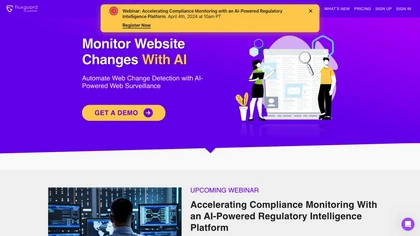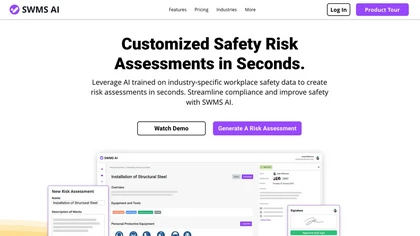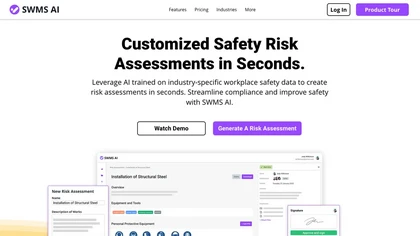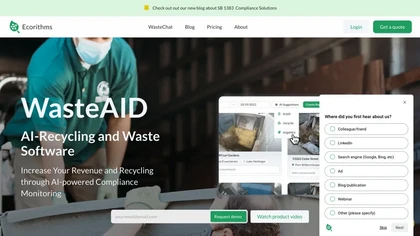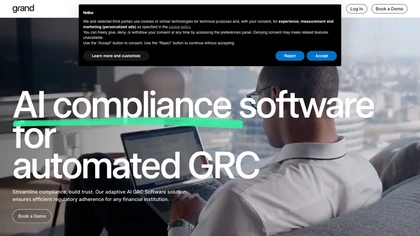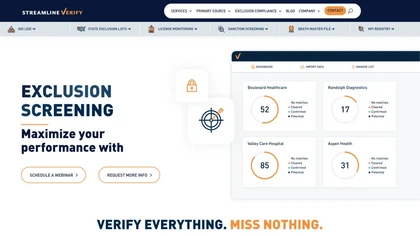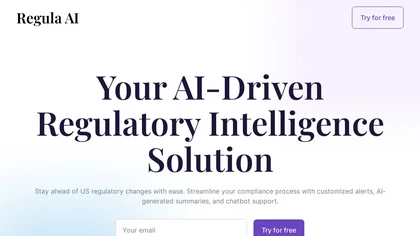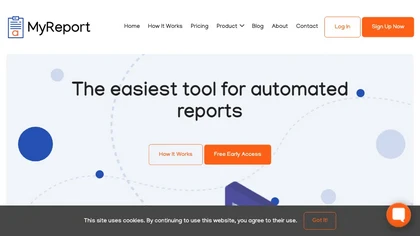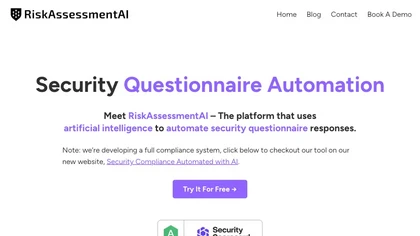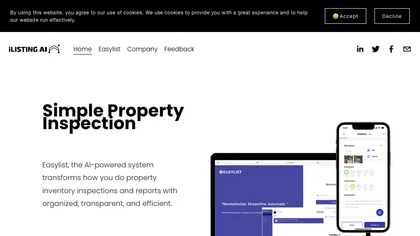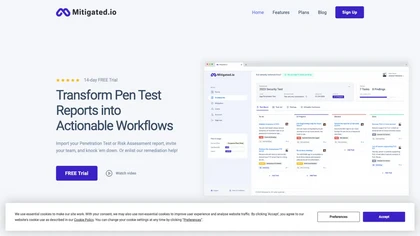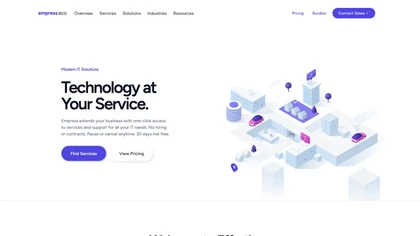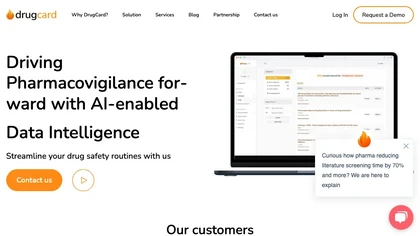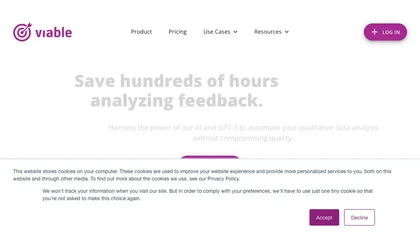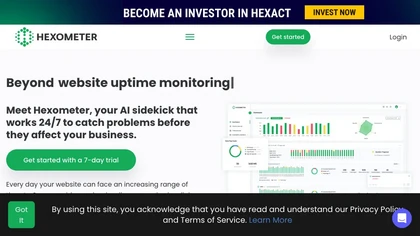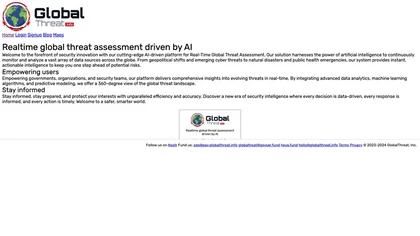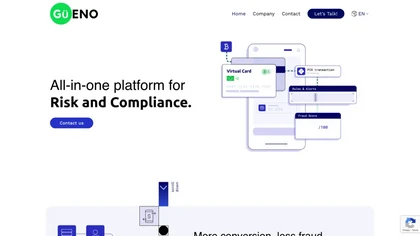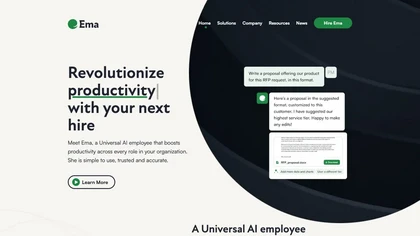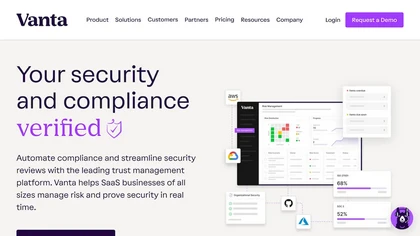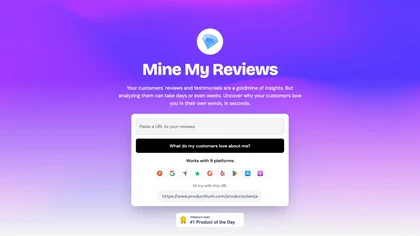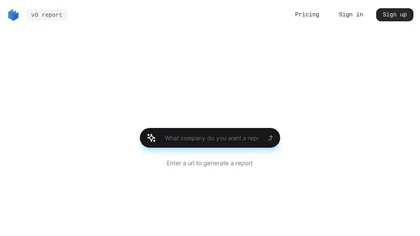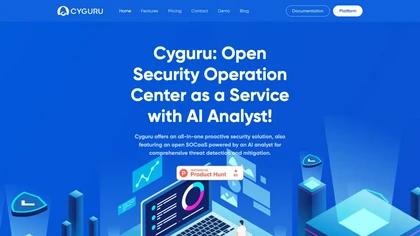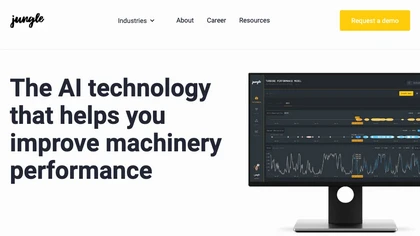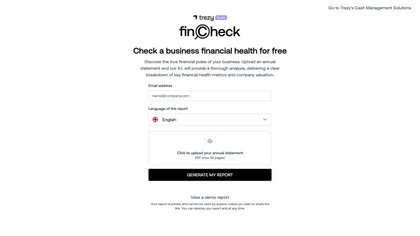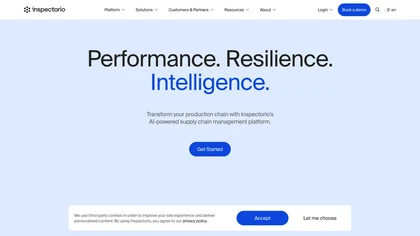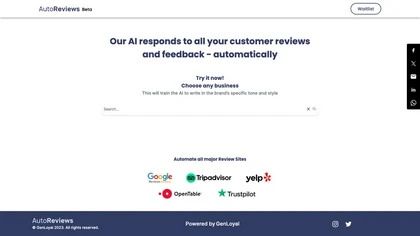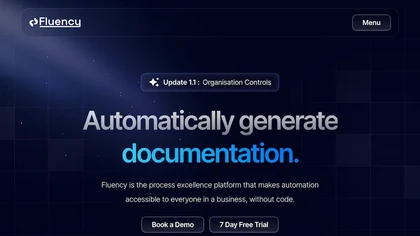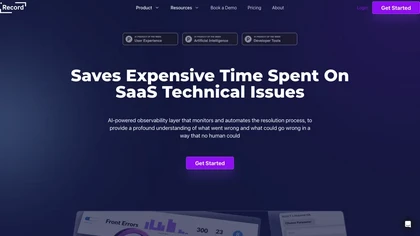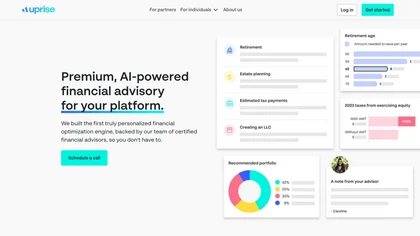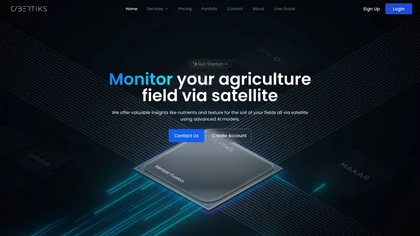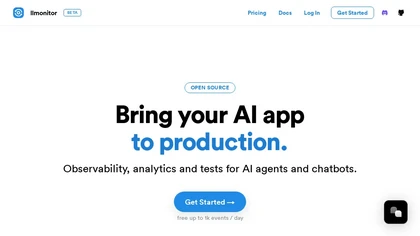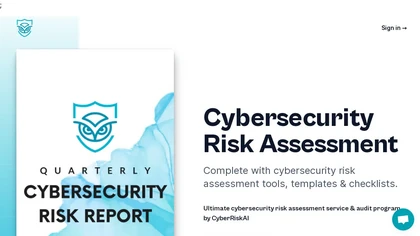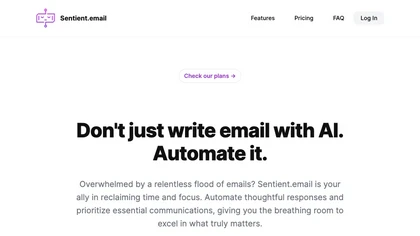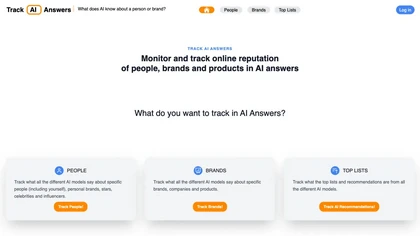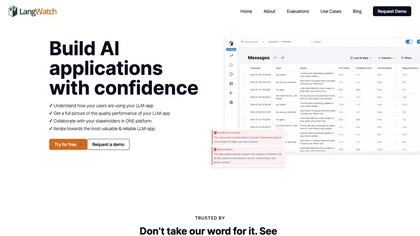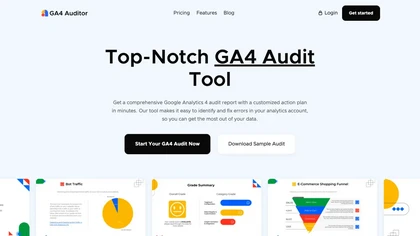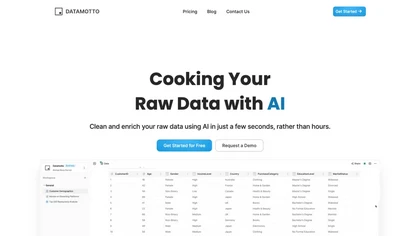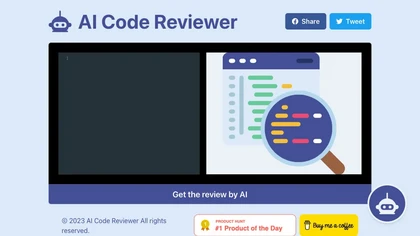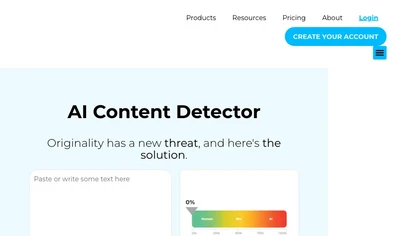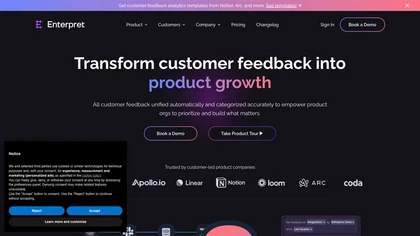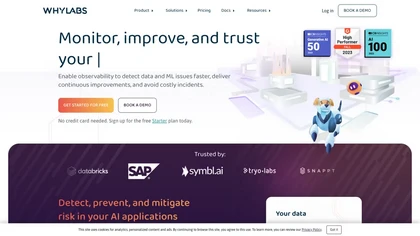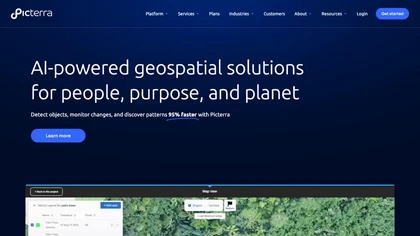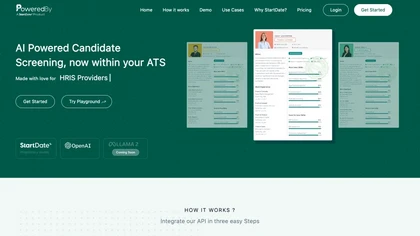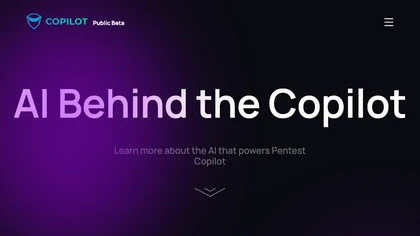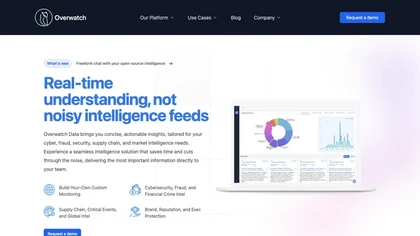AI use cases for Environmental Compliance
Generative AI can be applied in various applications for environmental compliance. Here are some examples to explore below for inspiration with AI tools to get you started with using AI in environmental compliance.
🛠️ 70 AI tools for Environmental Compliance
Explore a dynamic list of some of the most popular tools to get you started with various AI use cases and applications for Environmental Compliance to streamline your workflows and productivity today.
Fluxguard features
- Web Change Monitoring using generative AI
- Screenshots and pixel change detection
- Text change detection and network analysis
- Real-time or scheduled report dispatch
- Email reports with screenshots and text changes
SWMS features
- AI risk assessments
- Safety Co-Pilot integration
- Customization options
- Quickly generate safe work sequences
- AI-powered safety recommendations
SWMS AI features
- Tailored risk assessments generation
- Customizable safety policies
- Personalized document generation
- Integration of AI assistant for safety information
- Streamlining compliance processes
Harvy features
- Automated work diary data entry
- Breach detection
- AI-driven automation for reducing human error risks
- Fast notice-to-produce reporting
- Online access to work diary sheets for up to 3 years
WasteAID features
- Automatic route auditing
- Integration with existing systems
- Audit over 400k generators and 1m+ pickups
- Detect overflow incidents and identify contamination
- Tracking commercial account compliance
Privacy Observer features
- Automatically scans privacy policies
- Comprehensive score
- Detailed information on data handling
- Unlimited scans
- Anonymous checks
Greenifs.ai features
- Detect greenwashing errors
- Ensure compliance with green marketing guidelines
- Check social media content for compliance with region-specific regulations
- Offer targeted corrections and recommendations
- Help avoid legal issues related to environmental laws
🔥
Create your account, save tools & get personal recommendations
Receive a weekly digest of our handpicked top tools.
Unsubscribe anytime
Grand features
- Automated GRC software
- Efficient regulatory adherence
- Compliance workflows automation
- Policy and regulatory news monitoring
- Insights into regulatory changes
Streamline Verify features
- Screening against various databases including OIG LEIE, state exclusion lists, license monitoring, sanction screening, death master file, and NPI registry
- One-stop portal for quick identification and resolution of compliance screening issues
- API integration for future compliance needs
- Enhances efficiency in executing exclusion screening and credential management
- Trusted by over 10,000 establishments
Regula.ai features
- Provides customized alerts
- Generates ai-summaries
- Natural language query support
- Simplifies compliance
- Helps smbs stay informed about regulatory changes
MyReport features
- Automate data collection
- Automate citation
- Description of report topic
- Review of report
- Send report
RiskAssessmentAI features
- Automate security questionnaire responses
- Scan documentation
- Build knowledge base
- Support various assessment formats
- Collaboration between teams
Easylist features
- Automates property reporting
- Verifies inventory
- Documents claims
- Elevates processes
- Produces clear and cloud-based reports
Mitigated.io features
- Transforms penetration test risk assessment reports into actionable workflows
- Leverages collaborative workspaces for task assignment and progress tracking
- Provides AI-enriched mitigation guidance for security vulnerabilities
- Supports easy import of assessment reports
- Enables users to enlist security mitigation services directly from the dashboard
Gamma.ai
4.8Gamma.ai features
- Continuously monitors employees
- Notifies of security mistakes
empress.eco features
- AI-powered automation
- On-demand outsourcing solutions
- Software integrations
- Helpdesk services
- Industry-specific solutions
DrugCard features
- Automates drug safety routines
- Multiple languages and countries
- High-performance screening
PrivacyQuest features
- Record processing activities management
- Incident/breach management
- Individual rights management
- Consent management
- Automated document generation
Page Canary features
- Ssl certificate expiry alerts
- Custom web page audits
- Monitoring website functionality
- Accessibility checks
- Compliance with security best practices
Hexowatch features
- Detects visual changes
- Monitors content changes
- Alerts users about keyword changes
- Monitors technology stack changes
- Offers customizable monitoring options
viable features
- Automated qualitative data analysis
- Customer feedback understanding
- Nlp technology
- Feedback analysis
Hexometer features
- Website monitoring
- Issue detection
- Real-time notifications
- Agency dashboard
- White-label seo audits
- Performance tracking
Inc. features
- Real-time global threat assessment
- Continuous monitoring and analysis of vast data sources
- Actionable intelligence delivery
- Comprehensive insights into evolving threats
- Integration of advanced data analytics, machine learning, and predictive modeling
Pontus features
- Privacy-focused ai platform
- Smart anonymization feature
- Intuitive dashboard for auditing compliance
- Trust-made-easy components
- Secure document storage and privacy-aware caching
- Works with common llm providers
- Incorporates toxicity checking
Quensus features
- Automatic leak detection
- Water flow shut-off
- AI analytics for anomaly detection
- Remote leak detection and monitoring
- Extensive coverage
AI-FraudGuard Ecommerce features
- Contactless conversion
- Fraud prevention
- Transaction monitoring
- Compliance processes automation
- Real-time monitoring
Ema features
- Generative AI integration
- Emafusion™ model
- Data governance and security focus
- Integration with hundreds of enterprise apps
- Workflow automation across multiple applications
Vanta features
- Automating security compliance processes
- Integration with over 300 security tools
- AI capabilities for accelerating security workflows
- Vendor risk management assistance
- Compliance with over 25 frameworks
Mine My Reviews features
- User-friendly interface
- Customizable alerts for specific keywords and sentiments
- Insightful analytics for audience understanding
- Remarkably accurate sentiment analysis tool
- Streamlined process of monitoring and responding to customer feedback
checklist.gg features
- Checklist management
- Task management
- Workflow management
- Real-time collaboration
- Integration with existing tools
v0 report features
- Custom report generation
- Web scraping
- Automated insights
- File Uploading
Cyguru features
- Cloud-based AI security operation center (SOC)
- AI-powered attack detection
- Continuous monitoring for vulnerabilities and misconfigurations
- Compliance with essential security standards (GDPR, PCI DSS, NIST)
- ML and AI detection capabilities for identifying anomalies and suspicious activities
Jungle AI features
- Real-time monitoring
- Abnormal behavior detection
- Issue resolution collaboration
- Customizable for different industries
- Data-driven decision making
FinCheck by Trezy features
- Financial health assessment
- Annual statements analysis
- Multilingual reports
- Privacy control
- Security features
Soon Pulse features
- Pre-built pulses
- Natural language processing technology
- Kpi monitoring
- Trend analysis
- Mental health check-ins
AIEmployee features
- browser automation
- email-to-CRM/ERP data transfers
- automating tasks requiring human-like intelligence
- logging in budget and email expense tracking
- creating workflows
Devaten features
- Use Case Performance Monitoring
- Insightful Dashboards
- Automated Alerting
- Multi-Vendor Database Support
- Seamless Deployment & Integration
inspectorio.com features
- AI-powered supply chain management platform
- Utilization of innovative technologies like AI
- Digitizes and connects supply chain processes within a single tool
- Enables intelligent analysis of the entire ecosystem
- Reduces production chain risks through advanced analytics
Swif features
- Unified device management compliance automation
- Remote desktop feature
- Automated device security, access, and compliance management
- Support for MacOS, Windows, and Linux platforms
- Integration with Vanta, Drata, and Secureframe for SOC2 certification processes
AutoReviews AI features
- Automated response generation
- Customizable tone and style
- Training capability
- Actionable insights
- Integration with major review sites
Fluency.com features
- Automated Process Documentation
- Process Insights
- AI Assistant
- Automations
- Audit View
Record features
- Automated issue resolution process
- Monitoring user sessions
- Capture necessary data automatically
- AI suggestions for issue resolution
- Integration with support systems like Zendesk and Slack
Equixly features
- Continuous scanning of APIs for security vulnerabilities
- Detection and fixing of security issues in development process
- Scalable API pentesting capabilities
- Mapping of attack surface and inventory of API landscapes
- Transparent compliance reporting model
Uprise Embedded features
- AI-powered financial advisory platform
- Personalized financial optimization engine
- Automating regulatory compliance
- Concierge services for comprehensive financial planning
- Flexible integration options and white-label solutions
Cybertiks features
- Field monitoring through satellite imagery
- Utilizes advanced AI models for analysis
- Provides accurate metrics remotely
- Integrates precise AI models trained on thousands of fields
- Utilizes sensor fusion to integrate multiple data sources
llmonitor features
- Monitor requests to llms
- Track user activity
- Debug complex agents
- Capture user feedback
- Create labeled training datasets
Cyberriskai features
- Cybersecurity risk assessment
- Automated quarterly risk audits
- Nist cybersecurity audit framework
- Comprehensive assessment report
- Employee cybersecurity practices
Autonoma features
- Create a new account
- Connect with your code
- Let AI do the rest
- Understand visually, from start to finish
- Spot code upgrades
Sentient Email features
- Automate thoughtful responses
- Prioritize essential communications
- Streamline email management
- Reduce anxiety over unanswered messages
- Maximize the benefits of ai-driven capabilities
Track AI Answers features
- Monitor AI-generated answers
- Consolidate AI responses
- Continuously monitor mentions
- Deliver automatic email notifications
- Focus on accuracy and relevance
LangWatch features
- Monitoring and analyzing LLM applications
- Collaboration with stakeholders on a single platform
- User behavior understanding through LLM-powered apps
- Monitoring and analytics capabilities for generative AI companies
- Seamless integration with Azure and OpenAI SDKs
DailyBot features
- Workflow automation
- Check-ins
- Standups
- Retro reports
- Kudos and recognition rewards
QA Sphere features
- Digital checklist for managing tests
- Building a library of test cases
- Planning tests efficiently
- Organized test case library
- Integration with issue trackers
GA4 Auditor features
- Comprehensive audits for Google Analytics 4 accounts
- Detailed audit report generation
- Customized action plan creation
- Detection and resolution of tag health, performance, data integrity issues
- Implementation of best practices and actionable recommendations
Smartersales features
- Integration with zoom, teams, and meet
- Automated crm data entry
- Instant personalized feedback
- Detailed performance dashboards and summarized email reports
- Customizable experience
DataMotto features
- Data cleaning and enrichment using advanced algorithms
- Data validation processes
- Data gap filling for comprehensive dataset
- Data consistency maintenance with formatting standardization
- Data privacy and security prioritization
AI Code Reviewer features
- Automatically analyzing code for syntax errors and security vulnerabilities
- Suggesting improvements and best practices for code quality
- Identifying potential bugs and areas for optimization
- Generating automated test cases to ensure correctness of the code
- Tracking code changes and providing historical reports on code quality
Crossplag features
- Detects human vs ai-generated text
- Uses machine learning algorithm and natural language processing techniques
- Provides fast, accurate analysis
- Easy to use with instant feedback
- Free to use and does not store analyzed data
Verificient features
- AI-powered tools for online identity verification and monitoring
- Proctortrack for secure remote proctoring
- Biometrics, computer vision, and machine learning capabilities
- Continuous identity verification and remote monitoring
- Live proctoring with AI and automated remote proctoring
Eliteyez features
- Web protection
- Social media monitoring
- App monitoring
- Focus on protecting intellectual property and creative assets
- Expert insights and practical tips on safeguarding creative assets on blog
evalmyBRAND features
- Sentiment analysis
- Machine learning algorithms
- Natural language processing
- Social media monitoring
- Case management
Enterpret features
- Transform customer feedback into actionable insights
- Centralize and organize feedback from multiple sources
- Detect rising feedback trends
- Filter noise to highlight essential insights
- User-friendly interface
WhyLabs AI Observatory features
- Monitor structured and unstructured data
- Generate privacy-preserving dataset summaries
- Provide guardrails, evaluations, and observability for ML models
- Continuous monitoring of data quality, model drift, and key performance metrics
- Support batch and streaming processing
Picterra features
- Object detection
- Change monitoring
- Pattern discovery
- Model training for mapping boundaries
- Efficient data analysis
GeniePM features
- Product requirements
- User stories
- Use cases
PoweredBy features
- Integration with ATS and HRIS providers
- API key generation for screening requests
- Utilizes proprietary model for job analysis
- Includes NLP and computer vision applications
- Proficiency in machine learning frameworks
Pentest Copilot features
- Automated Pentesting
- Fine tuned AI for security tasks
- AI & human collaboration
- Seamless json integration
- Constrained programming
E-label.io features
- Generate e-labels with dynamic QR codes
- Upload nutritional information, ingredients, and lab results
- Customize stored data and attach QR code to wine labels
- Automatic translation support for EU languages
- Integration with ERP systems and web stores
Overwatch Data features
- Real-time intelligence platform
- Actionable insights tailored to various needs (cybersecurity, fraud, security, market intelligence)
- Custom monitoring capabilities for cybersecurity, financial crime intel, and brand reputation management
- Coverage of social media platforms in over 15 languages, news sources, deep web, and dark web crime-focused telegram channels
- Intuitive data visualizations, category breakdowns, and real-time executive summaries
